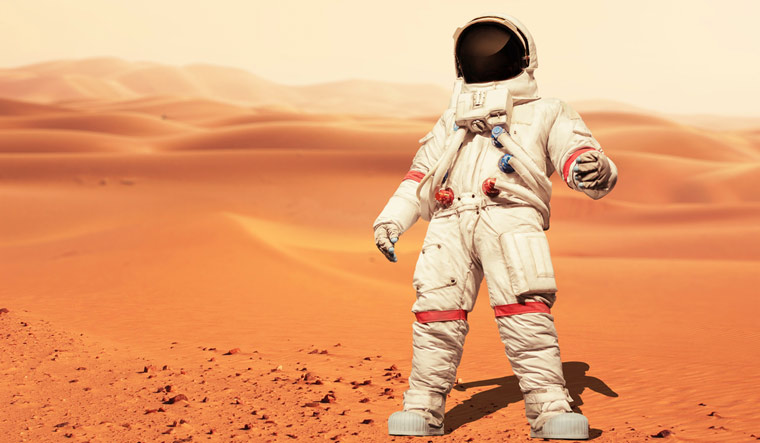
A 3D-printed human skin and bone tissue that could help keep astronauts healthy during future Mars missions has been developed by scientists, including those from the European Space Agency (ESA).
"Skin cells can be bioprinted using human blood plasma as a nutrient-rich 'bio-ink' -- which would be easily accessible from the mission crew-members," said Nieves Cubo from University Hospital of Dresden Technical University (TUD) in Germany.
"However, plasma has a highly fluid consistency, making it difficult to work with in altered gravitational conditions.
"We therefore developed a modified recipe by adding methylcellullose and alginate to increase the viscosity of the substrate," Cubo said.
Astronauts could obtain these substances from plants and algae respectively, a feasible solution for a self-contained space expedition.
Producing the bone sample involved printing human stem cells with a similar bio-ink composition, with the addition of a calcium phosphate bone cement as a structure-supporting material, which is subsequently absorbed during the growth phase.
To prove that the bioprinting technique was transferable to space, printing of both the skin and bone samples took place upside down, researchers said.
With prolonged access to weightlessness impractical, the challenge of such 'minus 1 G' testing represented the next best option, they said.
The samples represent the first steps in an ambitious end-to-end roadmap to make 3D bioprinting practical for space.
The project is looking into the kind of onboard facilities that would be required, in terms of equipment, surgical rooms and sterile environments, as well as the ability to create more complex tissues for transplants -- culminating ultimately in the printing of entire internal organs.
"A journey to Mars or other interplanetary destinations will involve several years in space," said Tommaso Ghidini, head of ESA's Structures, Mechanisms and Materials Division, overseeing the project.
"The crew will run many risks, and returning home early will not be possible. Carrying enough medical supplies for all possible eventualities would be impossible in the limited space and mass of a spacecraft," Ghidini said.
"Instead, a 3D bioprinting capability will let them respond to medical emergencies as they arise. In the case of burns, for instance, brand new skin could be bio-printed instead of being grafted from elsewhere on the astronaut's body, doing secondary damage that may not heal easily in the orbital environment," Ghidini said.
In the case of bone fractures -- rendered more likely by the weightlessness of space, coupled with the partial 0.38 Earth gravity of Mars -- replacement bone could be inserted into injured areas.
"In all cases the bioprinted material would originate with the astronaut themselves, so there would be no issue with transplant rejection," Ghidini added.

No comments:
Post a Comment